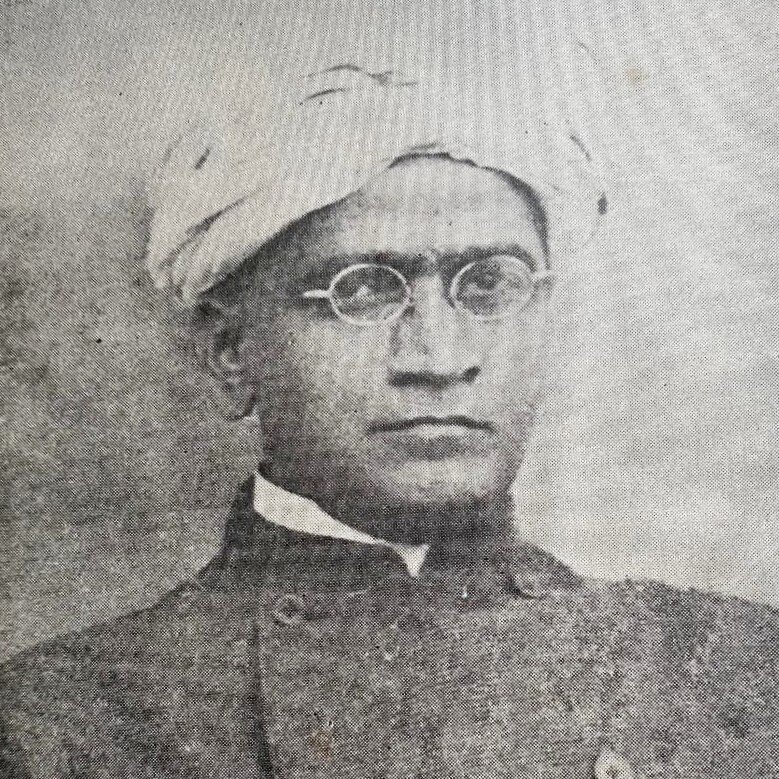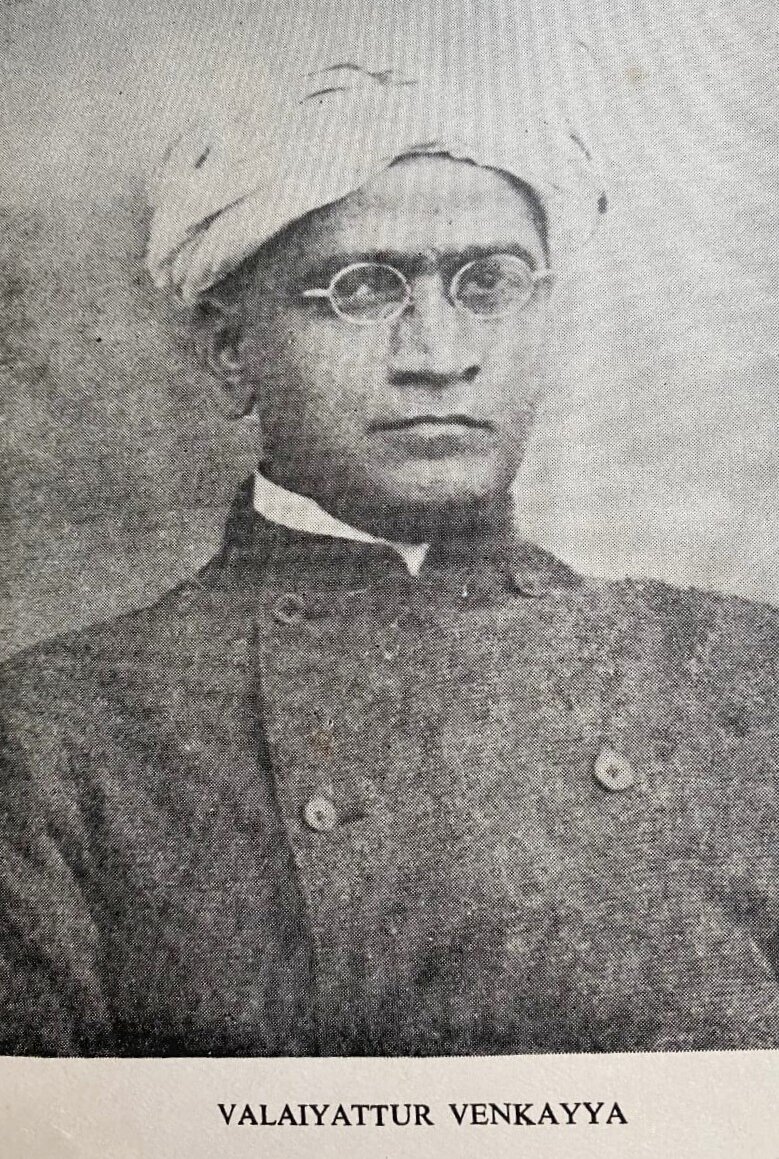V. Venkayya

Rai Bahadur [honorific title] Valaiyattur Venkayya (1 July 1864, Valaiyattur, Madras Presidency – 21 Nov.1912, Mambalam, Chingleput District, British India) was an Indian epigraphist and historian specialized in South Indian languages and scripts, who particularly studied the origins of the Pallava dynasty.
A graduate in Physics from Madras Christian College, Venkayya came from a family of Tamil scholars (lineage of the illustrious scholar Appaya Dikshita of the 16th century) and, while teaching physics in secondary school, developed an interest in ancient inscriptions of South India. Recognized by German Sanskritist Eugen Hultzsch as they met by chance at Mamallapuram temple in 1886, he served as Chief Epigraphist to the Government of Madras and, after Hultzsch’s retirement, as Chief Epigraphist to the Government of India from 1908 to his death in 1912. He was the first Indian scholar to hold this position, previously entitled to epigraphists of European origin.
Venkayya was instrumental in attributing the foundation of the famous Brihadeeswarar Temple in Thanjavur to King Raja Raja Chola, and not to Karikala Chola (who lived some 1,000 years before Raja Raja), as it had been speculated before. As he later studied temples in the Pallava and Pandya areas, he became convinced that the Pallavas were of Parthian origin. [The Parthian or Arsacid Empire, a major Iranian political and cultural power centered in ancient Iran from 247 BC to 224 AD, influenced the Indo-Parthian kingdom, also known as Pahlavas or Pahlawas, active in the Indus Valley (most of modern Pakistan and parts of northwestern India), from 19 CE to c. 226 CE, the rulers of which could have been members of the House of Suren.]
A frequent contributor to Epigraphia Indica, Vekkaya’s works were often quoted by epigraphists specializing in Southeast Asian inscription, George Coedès in particular. In 2021, his great granddaughter Smt Sunitha Madhavan, a retired professor, published his biography, Life and Works of Rai Bahadur V Venkayya (Chennai, Tamil Arts Academy), and the following year instituted the V Venkayya Award for Epigraphy with the support of the Tamil Heritage Trust, awarded to Prof. Subburayulu of Coimbatore in the inaugural year and in 2025 to Dr. Shrinivas V Padigar for her contribution “Beyond the Texts: Insights from Early Chalukya Inscriptions”.
see also Dr. Chithra Madhavan, “Rai Bahadur V. Venkayya – Pioneering epigraphist of India”, Madras Musings 30 – 21, 1 – 15 March 2021.

1) A portrait of V. Venkayya. 2) Cover of the biography written by Sunitha Madhavan, Venkayya’s great-granddaughter [photos from R. Gopu, “V Venkayya, the scholar who rediscovered ‘Ponniyin Selvan’ Raja Raja Chola”, The South First, 29 Sept. 2022.]

1) A portrait of V. Venkayya. 2) Cover of the biography written by Sunitha Madhavan, Venkayya’s great-granddaughter [photos from R. Gopu, “V Venkayya, the scholar who rediscovered ‘Ponniyin Selvan’ Raja Raja Chola”, The South First, 29 Sept. 2022.]
1) A portrait of V. Venkayya. 2) Cover of the biography written by Sunitha Madhavan, Venkayya’s great-granddaughter [photos from R. Gopu, “V Venkayya, the scholar who rediscovered ‘Ponniyin Selvan’ Raja Raja Chola”, The South First, 29 Sept. 2022.]
Publications
[under construction]
- [with E. Hultzsch & H. Krishnasastri] South Indian inscriptions: Tamil inscriptions in the Rajarajesvara temple at Tanjavur and other miscellaneous records of the Chola, Pallava, Pandya, and Vijayanagara dynasties, 1892, 3 volumes.
- “Madras Museum Plates of Jatilavrman”, The Indian Antiquary XXII, 1893: 57 – 64.
- Historical Method, 1902.
- Tamil Antiquary, 1903.
- The Pallavas, Presidential Address to the South Indian Association, 1907, 50 p.; repr. Blurb, 2025, 36 p. ISBN13 979 – 8331232504.
- [ed. with Sten Konow] Epigraphia Indica: And Record of the Archaeological Survey of India, 1909 – 1910, 1909-10; repr. Kessinger Pub, 2007, 460 p. ISBN13 978 – 0548771884.
- “Velurpalaiyam Plates of Nandivarman III”, Journal of the Royal Asiatic Society of Great Britain and Ireland (JRAS), Apr. 1911: 521 – 524.
